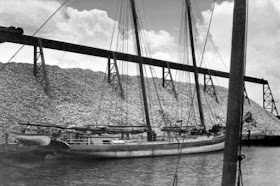Not a recipe for stew, but some of the elements of
a US Supreme Court decision issued yesterday. Last month we noted John Eccheverria's
discussion of the then-pending
Horne v. Dept. of Agriculture, a case in which the court was asked to decide whether a government regulation requiring raisin growers to hand over some of their raisins to the government was a "taking" of property requiring compensation. The case seemed to bear a striking resemblance to a 1929 case,
Leonard & Leonard v. Earle, in which the Supreme Court had ruled that a Maryland law requiring oyster packers to turn over shells to the state was not a taking. Echeverria noted that counsel for petitioners in
Horne argued that the early case should be distinguished on the grounds that oysters, unlike raisins, were wild animals, and therefore the property of the state to begin with. This seemed to be a weak legal argument, running against Supreme Court decisions that called public ownership of wildlife "a mere fiction".
It turns out that yesterday's decision bought the argument, a development with potentially far-reaching consequences for the ability of the government to protect nature without running afoul of the takings clause.
Echevveria explains in a post yesterday:



